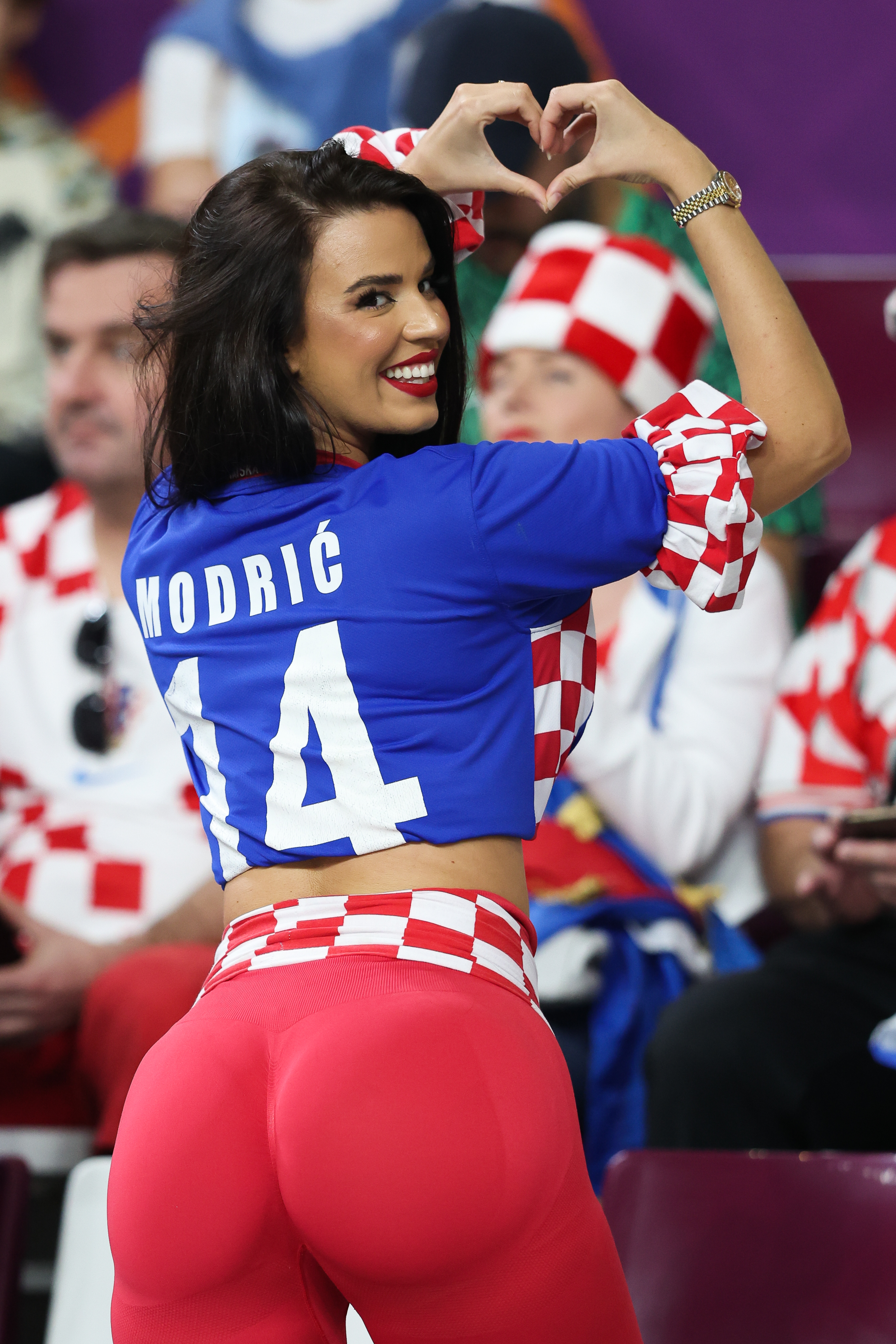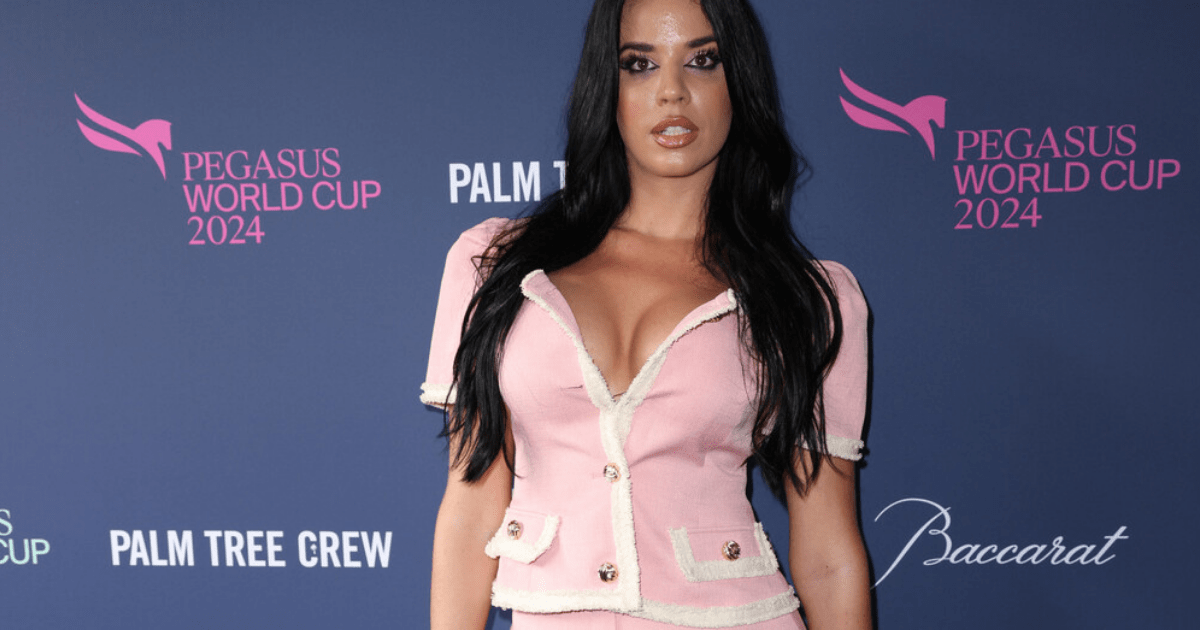Ivana Knoll, known for her daring outfits at the 2022 World Cup in Qatar, has turned heads once again, this time at a horse racing event. The 31-year-old beauty, dubbed the "world's hottest fan" during the World Cup, looked absolutely stunning in a bold pink jacket and matching skirt at the Pegasus World Cup in Florida.
A switch from football to horse racing
Ivana Knoll rose to stardom with her eye-catching looks at the 2022 World Cup, where she flaunted her figure in the stands at every Croatia match. However, she recently took a break from the beautiful game and made a striking appearance at a horse racing event.
A busty display and a day at the races
Ivana Knoll put on a busty display as she arrived at the event, posing for photographers in her attention-grabbing outfit. She then enjoyed watching the horses on the home straight, clearly having a fantastic day out. Taking to Instagram, she captioned her post, "What an amazing weekend," delighting her 3.1 million followers.
Continuing to captivate her fans
Ivana Knoll's fans couldn't help but express their admiration for her stunning appearance. Comments flooded in, with many calling her "gorgeous" and "beautiful always." One fan even described her as "irresistible" and the "queen of this event."

A career beyond the World Cup
Since her World Cup exploits, Ivana has embarked on a new career as a DJ. Her stunning style and captivating presence continue to make waves both on and off the field.
Frequently Asked Questions
What type of diet is ideal for racing horses?
It is important that the diet of a racing horse be of high quality, and well-balanced to meet its energetic needs during training and competition. It usually includes a combination high-quality hays, grains (such as oats or barsley) and commercially made feeds for racehorses. The diet should also be supplemented by essential vitamins and mineral to promote overall health and performance.
Do different breeds of horses require different training methods?
Different horse breeds have different characteristics, and the racing distances can also vary. Thoroughbreds and Quarter Horses undergo different types of training. Thoroughbreds excel at long-distance flat races, while Quarter Horses excel in sprinting. Each breed has unique physical and behavioral traits that require a tailored training approach.
Is it necessary for a racehorse to have a specific type of shoe?
Racing plates are typically lighter and thinner compared to regular horseshoes. These plates provide the necessary traction on the racetrack while minimizing weight. A farrier skilled in working with racehorses will carefully select and fit these shoes to match each horse’s hoof conformation and the specific racing surface they will be running on.
When can a horse be expected to start racing training?
Horses may begin their basic training as yearlings but they will usually begin more rigorous racing training and conditioning at around two years. Their bodies are still young, and can adapt to the learning process. The exact timing can vary depending on each horse’s temperament and development.
How important is the pedigree of a racehorse for success?
While pedigree can be an indicator of potential, it is not the sole determinant of a racehorse’s success. The lineage of a horse may indicate an inherited ability for speed or endurance. However, training, health and temperament can also be influential factors. Good training will maximize a horses natural abilities and may even enable it to outperform those with more impressive bloodlines.
How do you maintain your racehorse’s mental health?
The mental health of a racing horse is just as important as its physical condition. Diverse routines are important for a racehorse’s mental well-being. Preventing stress and behavioral issues can be prevented by ensuring that the horse has regular social interactions with other animals and a calm, stable atmosphere.
Statistics
- Around 80% of thoroughbred racehorses begin their racing careers by the age of two, according to industry estimates.
- Studies suggest that proper early training can reduce the risk of musculoskeletal injuries in racehorses by up to 50%.
- Approximately 70% of a racehorse’s diet consists of forage, with the remainder made up of grains and supplements to meet their high-calorie needs.
- Racehorse mortality rates during racing have been observed to be between 1.5 to 2 deaths per thousand starts, depending on the racing jurisdiction.
- The average racehorse reaches its peak physical ability between the ages of four to five, with some variation based on the breed and individual development.
- An extensive survey indicated that over 90% of racehorse trainers utilize swimming as a low-impact exercise in their conditioning routines.
External Links
racingpost.com
horseracing.com
bloodhorse.com
theridinginstructor.net
paulickreport.com
thoroughbred-racing.net
- Thoroughbred Race Training
How To
How to cool a racehorse down after a work out
It is important to cool down the racehorse after exercise to avoid muscle stiffness. This will also help with recovery. Slowly walk the horse on a long lead to lower its respiratory and heart rates. Use this time for assessing the horse and looking for signs of distress. Follow with a session of gentle stretching of the limbs and neck. To finish, brush the horse to loosen its muscles. Inspect for any cuts and abrasions.

